Stone fireplaces with mantels have been a symbol of warmth, comfort, and elegance for centuries. They serve not only as a functional feature in homes, providing heat during cold seasons but also as a central aesthetic element that can enhance the overall design of a living space. Today we will talk about the history, materials, styles, installation, maintenance, and benefits of stone fireplaces with mantels.

History of Stone Fireplaces
Early Uses
Stone fireplaces have ancient origins, with the earliest versions found in prehistoric caves where early humans used stone circles to contain fire. As civilization progressed, these rudimentary fireplaces evolved into more sophisticated structures, often made of locally available stone. In medieval Europe, stone fireplaces became central to castles and manor houses, symbolizing wealth and power.
Renaissance and Baroque Eras
During the Renaissance, fireplaces began to incorporate elaborate designs and intricate carvings. Stone mantels became a canvas for artistic expression, featuring motifs from mythology and nature. The Baroque era further amplified this trend, with grandiose and ornate stone fireplaces becoming a staple in the homes of the elite.
Industrial Revolution
The Industrial Revolution brought significant changes to fireplace design and construction. Advances in engineering and materials allowed for more efficient and diverse designs. Cast iron inserts became popular, but stone remained a preferred material for mantels due to its durability and timeless appeal.

20th Century to Present
In the 20th century, stone fireplaces saw a resurgence in popularity as part of the Arts and Crafts movement, which emphasized natural materials and craftsmanship. Today, stone fireplaces with mantels continue to be a popular choice, combining traditional aesthetics with modern functionality.
Regional Variations
Different regions have their unique styles and types of stone. For example, limestone fireplaces are prevalent in Europe, while granite and slate are common in North America. Each type of stone offers distinct textures and colors, contributing to a diverse range of designs.
Future Trends
Looking forward, the future of stone fireplaces with mantels may see innovations in eco-friendly materials and sustainable construction practices. Technology integration, such as smart home features, could also become more common, making stone fireplaces not only beautiful but also highly functional and efficient.
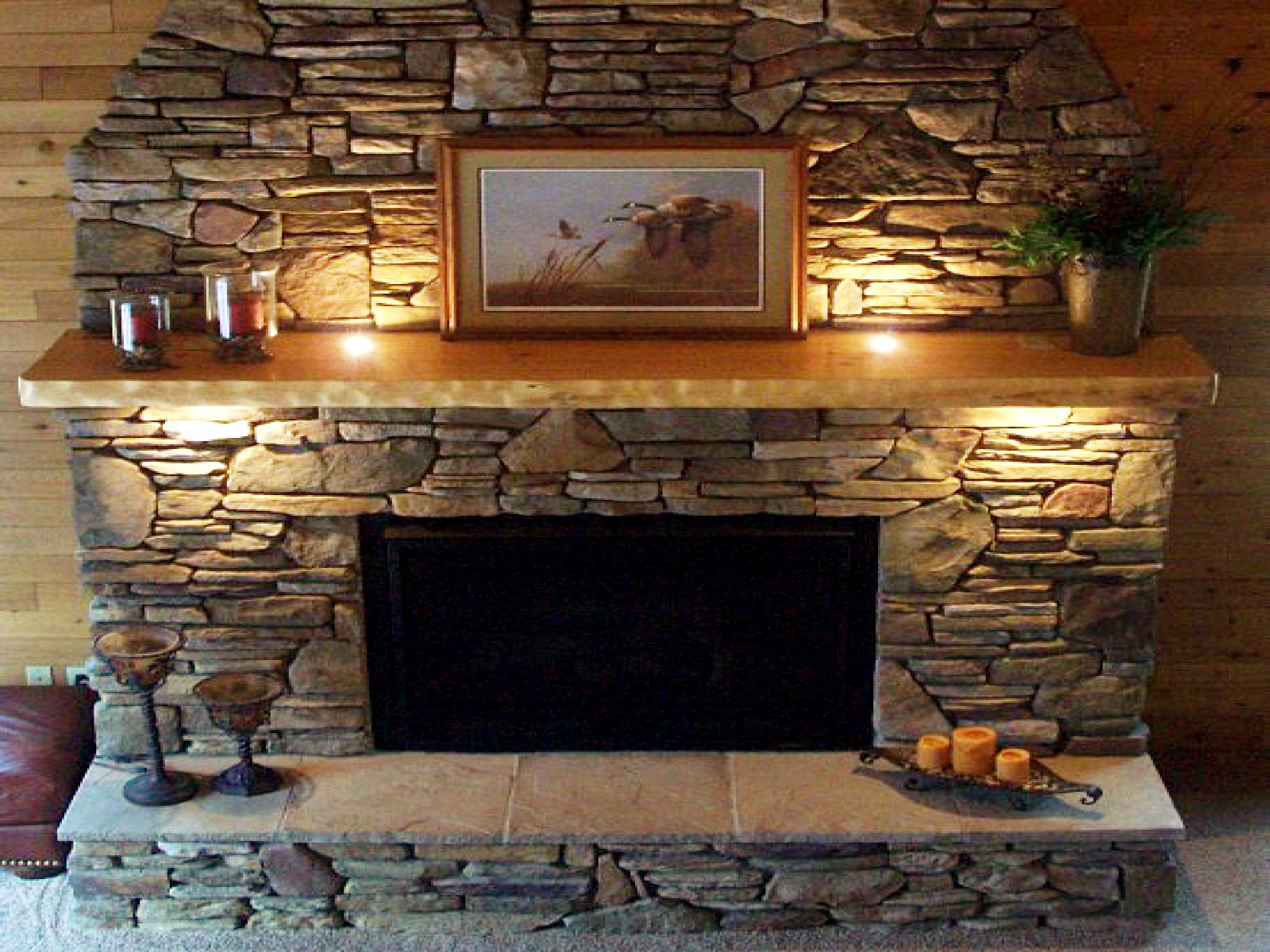
Materials for Stone Fireplaces
Granite
Granite is a popular choice for stone fireplaces due to its durability and variety of colors and patterns. It can withstand high temperatures and is resistant to scratches and stains, making it a practical option for busy households. Granite fireplaces can range from sleek, modern designs to rustic, textured looks.
Limestone
Limestone offers a softer, more uniform appearance compared to granite. It is often chosen for its light, neutral tones that can brighten up a room. Limestone is relatively easy to carve, allowing for intricate mantel designs. However, it requires sealing to prevent staining and damage from heat and moisture.
Marble
Marble fireplaces exude luxury and elegance. Known for its distinctive veining and smooth finish, marble is a timeless material that can elevate the aesthetic of any space. While beautiful, marble is also more susceptible to scratching and staining, necessitating regular maintenance and care.
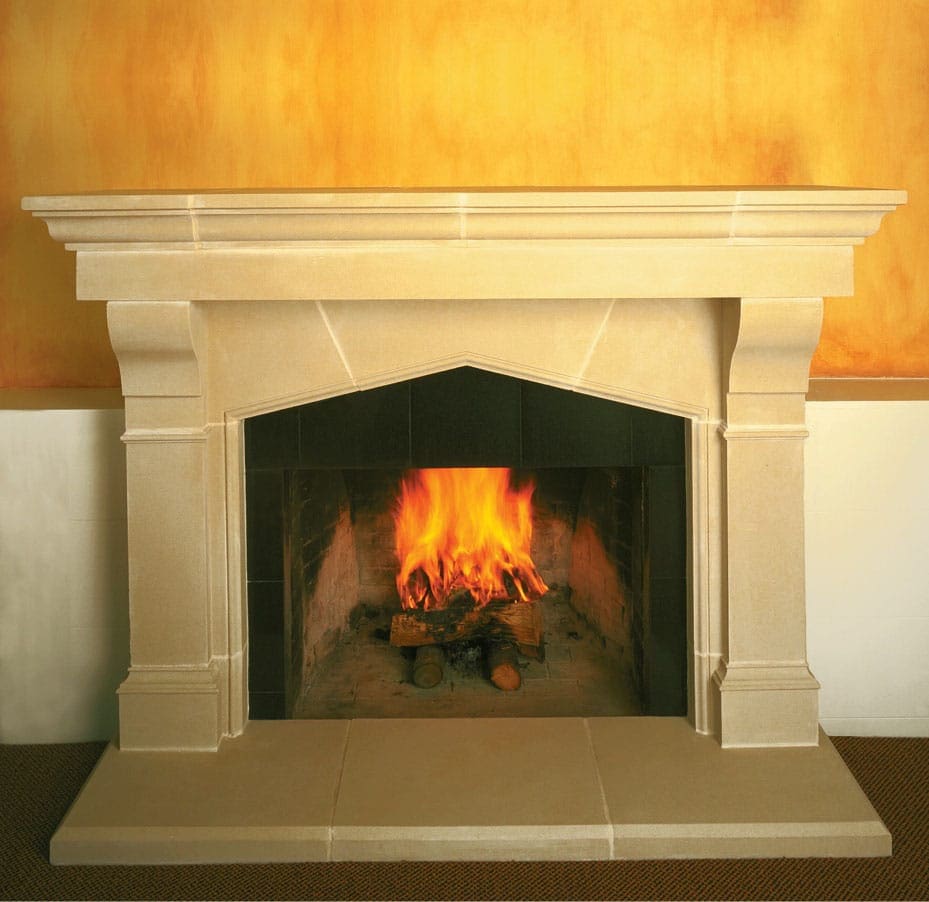
Slate
Slate is valued for its unique, layered texture and rich, earthy colors. It is a versatile material that can complement both traditional and contemporary designs. Slate is highly durable and heat-resistant, making it an excellent choice for fireplaces. Its natural cleft surface adds a rustic charm to any setting.
Travertine
Travertine is a type of limestone with a fibrous, marble-like texture. It is available in a range of warm, neutral tones. Travertine is often used in Mediterranean and Tuscan-inspired designs. While it offers a beautiful, natural look, travertine requires sealing and maintenance to protect it from stains and wear.
Fieldstone
Fieldstone fireplaces evoke a sense of rustic charm and natural beauty. Fieldstone is often sourced from local quarries, providing a varied and organic look. Each piece of stone has its unique shape and color, making every fieldstone fireplace one-of-a-kind. It is a durable and timeless material that adds character to any home.

Interesting Articles You May Want to Check:
- Gas Fireplace Mantel Clearance Code
- Wood Slab Fireplace Mantels
- Fake Fireplace Mantel Shelf
- Fireplace Mantel Cape Town
- Old Wood Fireplace Mantels

Styles of Stone Fireplaces with Mantels
Traditional
Traditional stone fireplaces often feature classic designs with ornate details and carvings. They typically use materials like marble or limestone and include elaborate mantels. These fireplaces can serve as a focal point in rooms with classic or antique decor, adding a sense of grandeur and history.
Modern
Modern stone fireplaces focus on simplicity and clean lines. Materials such as granite or slate are often used for their sleek and minimalist appeal. Modern mantels tend to be streamlined and unadorned, creating a sophisticated and contemporary look. These fireplaces fit well in homes with modern or minimalist design themes.
Rustic
Rustic stone fireplaces embrace natural, rugged aesthetics. Fieldstone or slate is commonly used to create a raw and earthy look. Rustic mantels often include reclaimed wood or rough-hewn beams, adding to the charm and character. These fireplaces are perfect for cabins, lodges, or homes with a cozy, country-style interior.

Transitional
Transitional stone fireplaces blend elements of both traditional and modern designs. They might feature a combination of classic materials like marble with contemporary lines and shapes. Transitional mantels strike a balance between ornate and minimalist, making them versatile and adaptable to various decor styles.
Victorian
Victorian-style stone fireplaces are characterized by intricate designs and luxurious details. Marble is a popular choice for these fireplaces, often featuring elaborate carvings and moldings. Victorian mantels are grand and decorative, reflecting the opulence and elegance of the Victorian era. These fireplaces are ideal for homes with historical or period-inspired decor.
Mediterranean
Mediterranean stone fireplaces draw inspiration from the warm, earthy tones and textures of the Mediterranean region. Travertine or limestone is often used to create a soft, inviting look. Mediterranean mantels may include arches, columns, or other architectural details reminiscent of Mediterranean villas. These fireplaces add a touch of warmth and elegance to any home.

Installation of Stone Fireplaces
Planning and Design
The first step in installing a stone fireplace is planning and design. This involves selecting the right materials, style, and location for the fireplace. It’s important to consider the overall design of the room and how the fireplace will integrate with other elements. Consulting with a professional designer or architect can help ensure a cohesive and well-thought-out plan.
Preparation
Before installation begins, the area where the fireplace will be installed must be prepared. This might include reinforcing the floor to support the weight of the stone, ensuring proper ventilation, and preparing the wall surface. If the fireplace is to be installed in an existing structure, any necessary demolition work should be completed at this stage.
Construction
The construction phase involves building the fireplace structure and installing the stone. This can be a complex process that requires skilled labor. The stone pieces are carefully cut and fitted together, and the mantel is installed. Ensuring proper alignment and securing the stone in place are crucial for both the appearance and safety of the fireplace.
Ventilation and Safety
Proper ventilation is essential for any fireplace to ensure safe operation and efficient burning. This involves installing a chimney or flue to direct smoke and gases outside the home. Safety measures, such as installing fireproof materials around the fireplace and ensuring clearances from combustible materials, should also be taken into account.
Finishing Touches
Once the main structure is complete, finishing touches are added. This can include sealing the stone to protect against stains and damage, adding decorative elements, and installing any additional features like lighting or shelving. The mantel is often the final piece to be installed, completing the look of the fireplace.
Inspection and Testing
The final step is to inspect and test the fireplace to ensure it is functioning properly and safely. This involves checking the ventilation system, testing the fireplace for proper draft, and ensuring that all components are securely installed. A professional inspection is recommended to certify that the fireplace meets all safety and building codes.
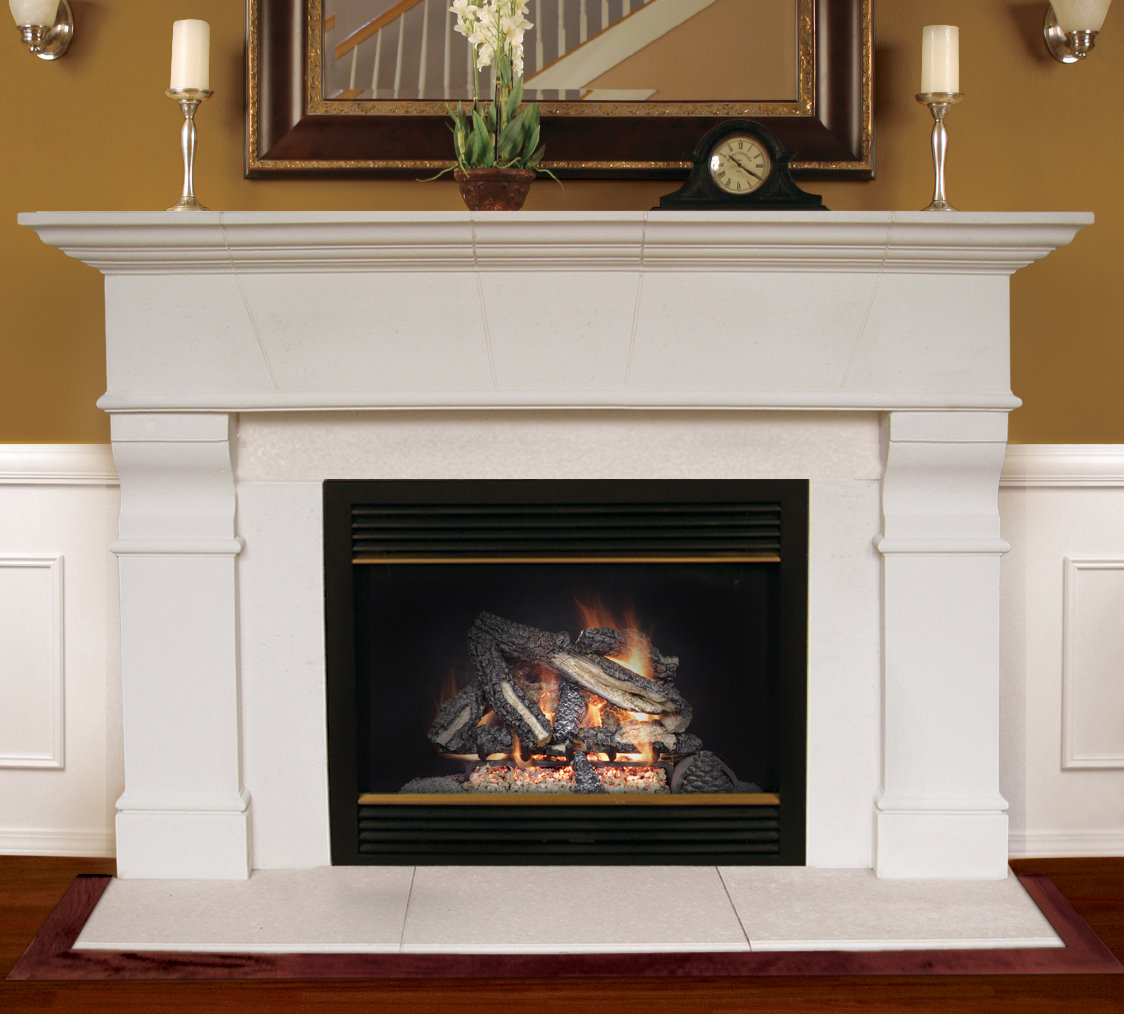
Maintenance of Stone Fireplaces
Regular Cleaning
Regular cleaning is essential to maintain the appearance and functionality of a stone fireplace. This includes removing soot and ash from the firebox, cleaning the stone surfaces, and ensuring the mantel remains free of dust and debris. Using appropriate cleaning products and methods for the specific type of stone is important to avoid damage.
Sealing
Many types of stone, such as limestone and travertine, require sealing to protect against stains and moisture. Sealing should be done periodically, following the manufacturer’s recommendations. A properly sealed stone fireplace will be easier to clean and maintain, and it will retain its beauty for longer.
Inspecting for Damage
Regular inspections can help identify any damage or wear early on. This includes checking for cracks in the stone, damage to the mortar joints, and any signs of deterioration. Addressing minor issues promptly can prevent more significant problems and costly repairs in the future.
Chimney and Ventilation Maintenance
Maintaining the chimney and ventilation system is crucial for the safe operation of a fireplace. This involves regular chimney cleaning to remove creosote buildup, inspecting the chimney for any damage or blockages, and ensuring that the flue and damper are functioning correctly. Professional chimney sweeps can provide thorough cleaning and inspections.
Addressing Stains and Discoloration
Over time, stone fireplaces can develop stains or discoloration from smoke, soot, or other sources. Addressing these issues promptly can help maintain the fireplace’s appearance. Specialized stone cleaners can be used to remove stains, and in some cases, professional restoration services may be required for more severe discoloration.
Seasonal Maintenance
Seasonal maintenance is important to ensure the fireplace is ready for use during the colder months. This includes a thorough cleaning and inspection before the start of the heating season, as well as checking the fireplace and chimney for any issues that may have developed during periods of non-use. Regular maintenance helps ensure the fireplace remains a safe and enjoyable feature in the home.

Benefits of Stone Fireplaces with Mantels
Aesthetic Appeal
One of the primary benefits of stone fireplaces with mantels is their aesthetic appeal. Stone fireplaces can enhance the beauty of any room, serving as a stunning focal point. The natural textures and colors of stone add depth and character, while the mantel provides an opportunity for additional decorative elements.
Durability
Stone is a highly durable material, capable of withstanding high temperatures and everyday wear and tear. Unlike other materials, stone does not warp, crack, or deteriorate easily, making it a long-lasting choice for fireplaces. A well-built stone fireplace can last for generations with proper care and maintenance.
Versatility
Stone fireplaces offer a high degree of versatility in terms of design and style. Whether you prefer a traditional, rustic, modern, or transitional look, stone can be tailored to suit your taste. The variety of stone types and finishes available allows for endless customization possibilities.
Heat Retention
Stone has excellent heat retention properties, making stone fireplaces efficient at warming up a room. Once heated, stone retains warmth and radiates it back into the space, providing consistent and comfortable heat. This can help reduce heating costs and improve energy efficiency in the home.
Added Property Value
A well-designed stone fireplace can add significant value to a property. Potential buyers often view fireplaces as desirable features, particularly those made from high-quality materials like stone. Investing in a stone fireplace can enhance the appeal and marketability of a home, potentially leading to a higher resale value.
Eco-Friendly Options
Many types of stone used for fireplaces are natural and sustainable materials. Sourcing stone locally can reduce the environmental impact associated with transportation. Additionally, stone fireplaces do not require chemicals or treatments that can harm the environment, making them an eco-friendly choice for homeowners.

Common Mistakes to Avoid
Skimping on Materials
One common mistake is choosing lower-quality stone to save on costs. While it might reduce initial expenses, cheaper materials can lead to more frequent repairs and replacements. Investing in high-quality stone ensures durability and long-term value.
Ignoring Professional Help
DIY installation of stone fireplaces can be tempting, but it often leads to mistakes that compromise safety and aesthetics. Hiring professionals ensures the fireplace is installed correctly, safely, and to code, preventing future issues.
Inadequate Ventilation
Improper ventilation can lead to a host of problems, including smoke damage and health hazards. Ensuring proper chimney and flue installation and maintenance is crucial for safe and efficient fireplace operation.
Overlooking Sealing
Failing to seal porous stones like limestone and travertine can result in stains and damage over time. Regular sealing protects the stone from moisture, heat, and staining, preserving its appearance and longevity.
Neglecting Maintenance
Skipping regular maintenance can lead to the deterioration of both the stone and the fireplace’s functionality. Regular cleaning, inspections, and timely repairs are essential to keep the fireplace in optimal condition.
Poor Design Planning
Not considering the overall design and functionality of the fireplace can result in a feature that does not complement the room or meet the household’s needs. Proper planning and design, possibly with professional input, ensure the fireplace enhances the space and serves its intended purpose effectively.
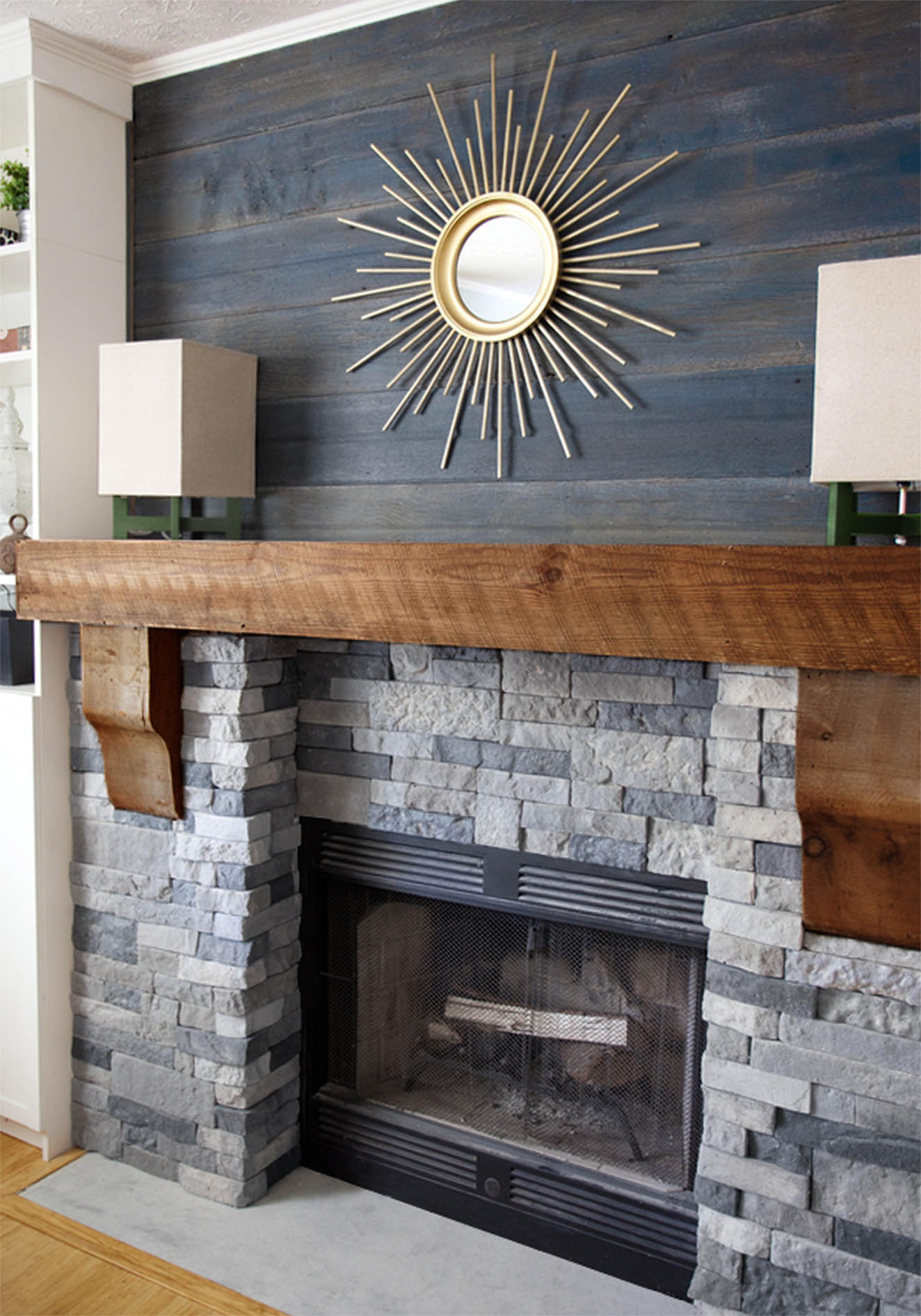
What are the best types of stone for fireplaces?
The best types of stone for fireplaces include granite, limestone, marble, slate, travertine, and fieldstone. Each type offers unique aesthetic and functional properties. Granite is known for its durability and variety of colors, marble for its elegance, and slate for its rustic charm. The choice depends on your specific needs and design preferences.
How do I maintain a stone fireplace?
Maintaining a stone fireplace involves regular cleaning to remove soot and ash, sealing the stone periodically to prevent stains and damage, and inspecting for any signs of wear or damage. Additionally, maintaining the chimney and ventilation system is crucial for safe operation. Using appropriate cleaning products for the specific type of stone is also important.
Can I install a stone fireplace myself?
While it is possible to install a stone fireplace yourself, it is generally recommended to hire professionals. Stone fireplace installation is complex and requires skilled labor to ensure proper construction, alignment, and safety. Professional installation ensures the fireplace meets all building codes and functions correctly.
How much does it cost to install a stone fireplace?
The cost of installing a stone fireplace varies widely depending on factors such as the type of stone, the complexity of the design, and labor costs. On average, homeowners can expect to pay between $3,000 and $10,000 for a stone fireplace installation. High-end materials and intricate designs can increase the cost significantly.
Do stone fireplaces require special maintenance?
Stone fireplaces do require specific maintenance to preserve their beauty and functionality. This includes regular cleaning, sealing porous stones, and inspecting for damage. Proper maintenance also involves ensuring the chimney and ventilation system are kept clean and in good working order. Neglecting maintenance can lead to deterioration and safety issues.
What are the benefits of having a mantel on a stone fireplace?
A mantel on a stone fireplace provides several benefits. It enhances the aesthetic appeal, offering a platform for decorative items and personal touches. A mantel can also serve as a protective barrier, shielding the wall above the fireplace from heat and soot. Additionally, it can provide extra storage space and contribute to the overall design and functionality of the fireplace.
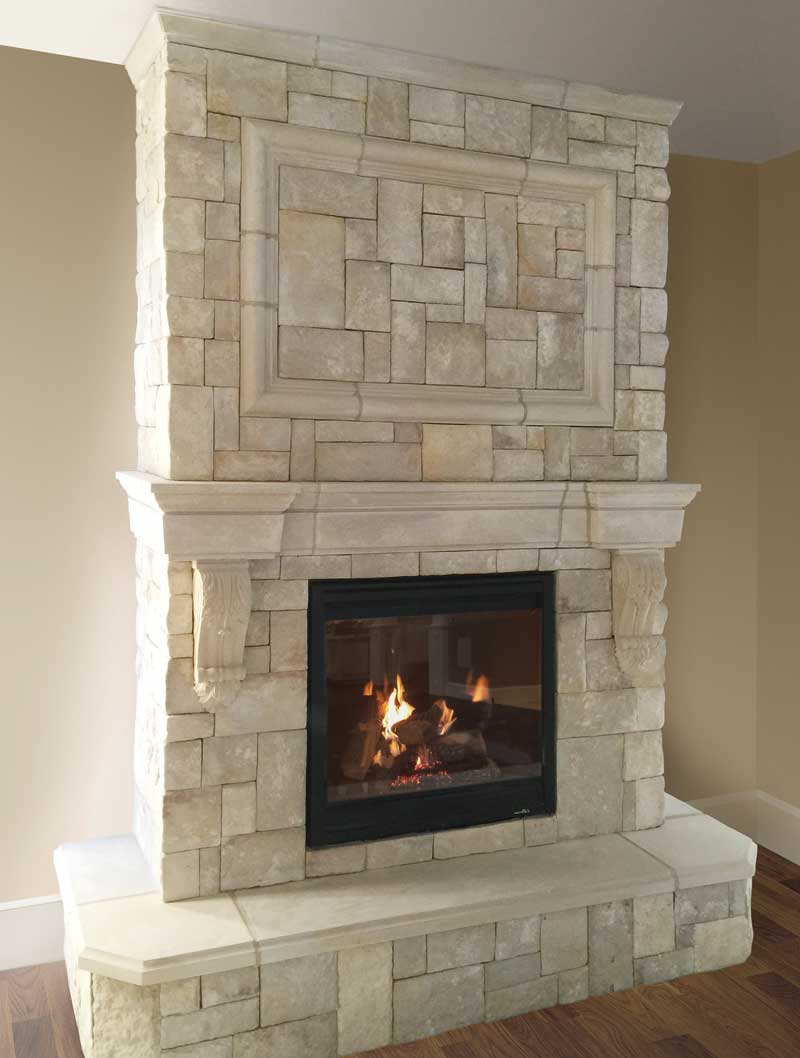
Related Posts:
- Fireplace Mantel Cap
- Candle Holders For Fireplace Mantel
- Fireplace Mantel Hardware
- How to Remove Fireplace Mantel Shelf
- Red Brick Fireplace Mantel Decorating Ideas
- Fireplace Mantel Christmas Decorating Ideas
- Fireplace Mantel Plans Drawings
- Fireplace Mantel Wood Slab
- DIY Faux Fireplace Mantel and Surround
- Unique Wood Fireplace Mantels